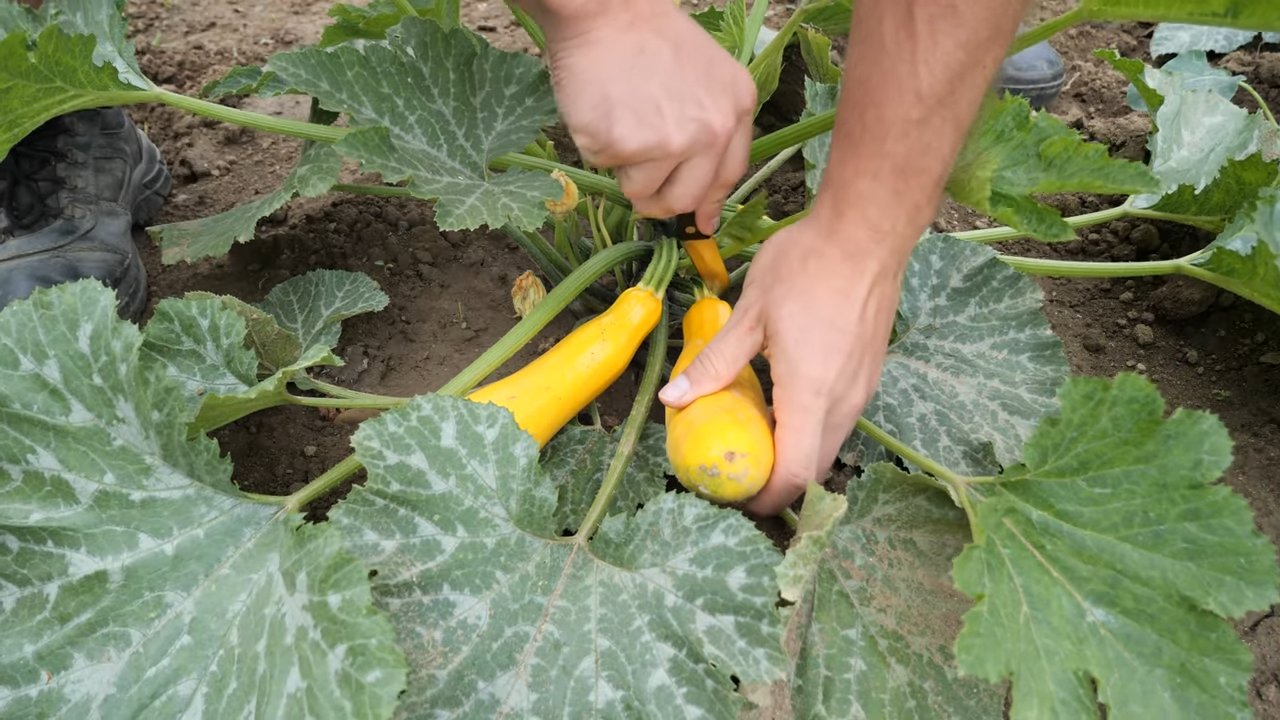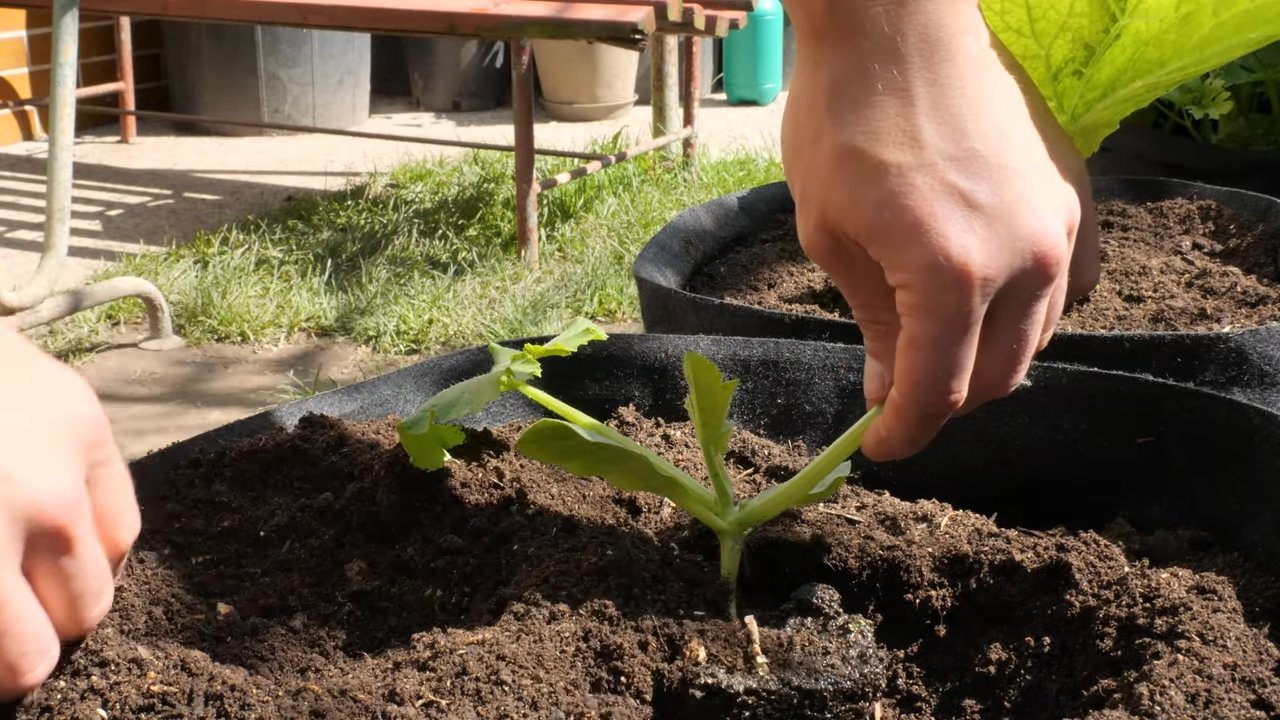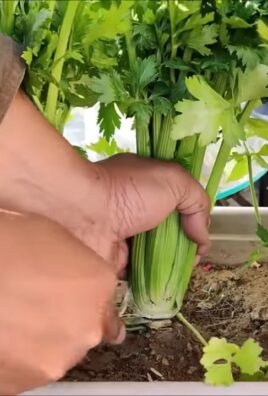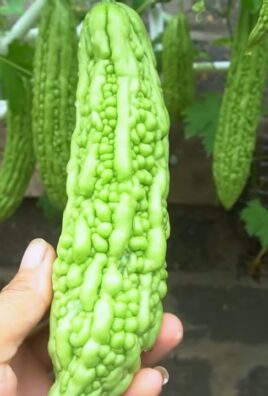Growing Zucchini in Grow Bags: Unlock the secrets to a bountiful harvest, even without a sprawling garden! Have you ever dreamed of plucking fresh, vibrant zucchini right from your own backyard, but felt limited by space? Well, dream no more! This DIY guide is your ticket to zucchini success, no matter how small your patio or balcony might be.
Zucchini, a member of the squash family, has a rich history, tracing back to Central and South America thousands of years ago. While its exact origins are debated, it’s clear that this versatile vegetable has been a staple in diets across the globe for centuries. From hearty stews to delectable baked goods, zucchini’s mild flavor and adaptability make it a culinary favorite.
But why growing zucchini in grow bags? Because it’s a game-changer! Many gardeners struggle with limited space, poor soil conditions, or even just the sheer commitment of a traditional garden plot. Grow bags offer a fantastic solution, providing excellent drainage, aeration, and portability. Plus, they warm up faster in the spring, giving your zucchini plants a head start. I’m excited to share these simple yet effective tricks that will empower you to cultivate a thriving zucchini patch, right at your fingertips. Get ready to enjoy an abundance of delicious zucchini all season long!

Zucchini im Pflanzsack anbauen: Dein umfassender DIY-Leitfaden
Hey Gärtnerfreunde! Habt ihr Lust auf eine reiche Zucchini-Ernte, aber wenig Platz im Garten? Keine Sorge, ich zeige euch, wie ihr Zucchini erfolgreich im Pflanzsack anbauen könnt. Es ist einfacher als ihr denkt und eine tolle Möglichkeit, auch auf Balkonen oder Terrassen frisches Gemüse zu ziehen. Los geht’s!
Warum Zucchini im Pflanzsack?
* Platzsparend: Ideal für kleine Gärten, Balkone oder Terrassen.
* Bessere Kontrolle: Du kannst die Bodenqualität und Bewässerung optimal steuern.
* Weniger Schädlinge: Erhöhte Positionierung kann Schädlinge fernhalten.
* Einfacher Transport: Du kannst den Pflanzsack bei Bedarf umstellen.
* Frühere Ernte: Pflanzsäcke erwärmen sich schneller als der Boden, was zu einem früheren Wachstum führt.
Was du brauchst: Die Materialliste
Bevor wir loslegen, hier eine Liste mit allem, was du für dein Zucchini-Pflanzsack-Projekt benötigst:
* Pflanzsack: Mindestens 45-60 Liter Fassungsvermögen (je größer, desto besser!)
* Hochwertige Blumenerde: Speziell für Gemüse oder eine Mischung aus Gartenerde, Kompost und Kokosfaser.
* Zucchini-Samen oder Jungpflanzen: Wähle eine Sorte, die für den Anbau im Topf geeignet ist (z.B. ‘Black Beauty’, ‘Gold Rush’).
* Langzeitdünger: Für eine kontinuierliche Nährstoffversorgung.
* Gießkanne oder Gartenschlauch: Zum Bewässern.
* Pflanzschaufel: Zum Einpflanzen.
* Mulchmaterial: Stroh, Holzhackschnitzel oder Rindenmulch (optional).
* Stützstruktur: Ein Rankgitter oder Bambusstäbe (optional, aber empfehlenswert für buschige Sorten).
* Gartenvlies: Um den Boden des Pflanzsacks auszukleiden (optional).
Schritt-für-Schritt-Anleitung: So pflanzt du deine Zucchini im Pflanzsack
Vorbereitung des Pflanzsacks
1. Pflanzsack auswählen: Wähle einen Pflanzsack mit guter Drainage. Wenn dein Pflanzsack keine Löcher hat, bohre ein paar kleine Löcher in den Boden, damit überschüssiges Wasser ablaufen kann.
2. Boden auskleiden (optional): Lege ein Stück Gartenvlies auf den Boden des Pflanzsacks. Das verhindert, dass Erde durch die Drainagelöcher gespült wird.
3. Erde einfüllen: Fülle den Pflanzsack mit hochwertiger Blumenerde. Lass etwa 5-10 cm Platz bis zum Rand. Die Erde sollte locker und gut durchlässig sein. Ich mische gerne noch etwas Kompost unter die Blumenerde, um den Nährstoffgehalt zu erhöhen.
4. Langzeitdünger hinzufügen: Mische den Langzeitdünger gemäß den Anweisungen auf der Verpackung unter die Erde. Das sorgt für eine gleichmäßige Nährstoffversorgung während der gesamten Saison.
Aussaat oder Einpflanzen der Zucchini
1. Aussaat (wenn du Samen verwendest):
* Mache mit dem Finger oder einem kleinen Stock ein kleines Loch (ca. 2-3 cm tief) in die Erde.
* Lege 2-3 Samen in das Loch. Das erhöht die Wahrscheinlichkeit, dass mindestens ein Samen keimt.
* Bedecke die Samen mit Erde und drücke sie leicht an.
* Gieße die Erde vorsichtig an.
2. Einpflanzen (wenn du Jungpflanzen verwendest):
* Grabe ein Loch in die Erde, das groß genug ist, um den Wurzelballen der Jungpflanze aufzunehmen.
* Nimm die Jungpflanze vorsichtig aus dem Topf und lockere den Wurzelballen etwas auf.
* Setze die Jungpflanze in das Loch und fülle es mit Erde auf.
* Drücke die Erde leicht an und gieße die Pflanze gründlich.
3. Abstand beachten: Wenn du mehrere Zucchini-Pflanzen in einem Pflanzsack anbauen möchtest, achte auf ausreichend Abstand zwischen den Pflanzen (mindestens 45-60 cm). Zucchini brauchen Platz zum Wachsen.
4. Mulchen (optional): Verteile eine Schicht Mulchmaterial (Stroh, Holzhackschnitzel oder Rindenmulch) um die Pflanze. Das hilft, die Feuchtigkeit im Boden zu halten, Unkraut zu unterdrücken und den Boden vor Temperaturschwankungen zu schützen.
Pflege deiner Zucchini im Pflanzsack
1. Bewässerung: Zucchini brauchen viel Wasser, besonders während der Fruchtbildung. Gieße regelmäßig, am besten morgens oder abends, damit die Blätter nicht verbrennen. Die Erde sollte immer feucht, aber nicht nass sein. Vermeide Staunässe, da dies zu Wurzelfäule führen kann. Überprüfe die Feuchtigkeit der Erde, indem du deinen Finger etwa 2-3 cm tief in die Erde steckst. Wenn sich die Erde trocken anfühlt, ist es Zeit zum Gießen.
2. Düngung: Obwohl du bereits Langzeitdünger verwendet hast, kann es sinnvoll sein, während der Saison zusätzlich zu düngen. Verwende einen Flüssigdünger für Gemüse gemäß den Anweisungen auf der Verpackung. Dünge etwa alle 2-3 Wochen.
3. Sonnenlicht: Zucchini brauchen mindestens 6-8 Stunden Sonnenlicht pro Tag. Stelle den Pflanzsack an einen sonnigen Standort.
4. Stützstruktur (optional): Einige Zucchini-Sorten wachsen buschig und brauchen eine Stütze, um nicht umzukippen. Verwende ein Rankgitter oder Bambusstäbe, um die Pflanze zu stützen. Befestige die Triebe vorsichtig an der Stütze.
5. Schädlinge und Krankheiten: Achte auf Schädlinge wie Blattläuse, Schnecken oder Mehltau. Kontrolliere die Pflanzen regelmäßig und bekämpfe Schädlinge und Krankheiten frühzeitig mit geeigneten Mitteln (z.B. Neemöl, Brennnesseljauche).
6. Blüten bestäuben (optional): Wenn du feststellst, dass deine Zucchini-Pflanze viele Blüten hat, aber keine Früchte bildet, kann es sein, dass die Blüten nicht ausreichend bestäubt werden. Du kannst die Bestäubung selbst durchführen, indem du mit einem kleinen Pinsel Pollen von den männlichen Blüten (mit dünnem Stiel) auf die weiblichen Blüten (mit kleinem Fruchtansatz) überträgst.
7. Ernte: Zucchini sind erntereif, wenn sie etwa 15-20 cm lang sind. Schneide die Früchte mit einem scharfen Messer oder einer Gartenschere ab. Ernte regelmäßig, um die Produktion neuer Früchte anzuregen. Je öfter du erntest, desto mehr Zucchini wirst du bekommen!
Zusätzliche Tipps für eine reiche Ernte
* Sorte wählen: Wähle eine Zucchini-Sorte, die für den Anbau im Topf geeignet ist. Kleinere, buschige Sorten sind oft besser geeignet als rankende Sorten.
* Bodenqualität: Verwende hochwertige Blumenerde, die gut durchlässig ist und ausreichend Nährstoffe enthält.
* Drainage: Achte auf eine gute Drainage, um Staunässe zu vermeiden.
* Regelmäßige Kontrolle: Kontrolliere deine Pflanzen regelmäßig auf Schädlinge und Krankheiten.
* Nicht zu viele Pflanzen: Überfülle den Pflanzsack nicht. Zu viele Pflanzen konkurrieren um Nährstoffe und Wasser.
* Schatten in der Mittagshitze: An sehr heißen Tagen kann es sinnvoll sein, den Pflanzsack während der Mittagshitze etwas zu beschatten.
* Erntezeitpunkt: Ernte die Zucchini, wenn sie noch jung und zart sind. Ältere Zucchini können holzig und bitter werden.
* Abwechslung: Pflanze verschiedene Zucchini-Sorten an, um eine größere Vielfalt an Farben und Geschmacksrichtungen zu erhalten.
Häufige Probleme und Lösungen
* Gelbe Blätter: Können auf Nährstoffmangel, Überwässerung oder Schädlingsbefall h

Conclusion
So, there you have it – a comprehensive guide to successfully growing zucchini in grow bags! We’ve explored the myriad benefits, from space-saving convenience to superior drainage and temperature control, all culminating in a potentially bountiful harvest of delicious zucchini. But why is this DIY trick a must-try? Simply put, it democratizes gardening. You don’t need acres of land or meticulously prepared garden beds to enjoy fresh, homegrown zucchini. Grow bags offer an accessible, affordable, and manageable solution for anyone, regardless of their gardening experience or living situation.
Beyond the practical advantages, growing your own zucchini in grow bags offers a unique connection to your food. There’s an undeniable satisfaction in nurturing a plant from seed to harvest, knowing exactly where your food comes from and how it was grown. This connection fosters a deeper appreciation for the natural world and the effort involved in producing the food we often take for granted.
But the journey doesn’t end here! Feel free to experiment with different zucchini varieties. Consider trying golden zucchini for a vibrant splash of color, or perhaps a round zucchini for a unique presentation. You can also companion plant within your grow bag. Marigolds can deter pests, while basil can enhance the flavor of your zucchini. Don’t be afraid to get creative and tailor your grow bag garden to your specific preferences and needs.
Furthermore, think about the size of your grow bag. While we’ve recommended a 15-20 gallon bag, you might find that a slightly larger or smaller size works better for your particular variety of zucchini or growing conditions. Monitor your plants closely and adjust your watering and fertilizing schedule as needed. Remember, gardening is a learning process, and every season brings new opportunities for growth and discovery.
Growing zucchini in grow bags is not just about producing vegetables; it’s about embracing a sustainable lifestyle, connecting with nature, and enjoying the fruits (or rather, vegetables) of your labor. It’s about taking control of your food source and experiencing the joy of homegrown goodness.
We wholeheartedly encourage you to give this DIY trick a try. Start small, learn as you go, and don’t be discouraged by setbacks. Gardening is a journey, not a destination. And most importantly, share your experiences with us! We’d love to hear about your successes, challenges, and any tips or tricks you’ve discovered along the way. Share your photos, stories, and questions in the comments below. Let’s build a community of grow bag gardeners and inspire others to embrace the joy of homegrown zucchini!
Now, let’s address some frequently asked questions to ensure your zucchini growing journey is as smooth and successful as possible.
Frequently Asked Questions (FAQ)
What type of grow bag is best for zucchini?
While fabric grow bags are generally recommended due to their excellent drainage and aeration, the “best” type depends on your specific needs and preferences. Fabric bags, especially those made from breathable materials like felt, allow air to circulate around the roots, preventing root rot and promoting healthy growth. Plastic grow bags are a more affordable option, but they don’t offer the same level of breathability and can lead to waterlogging if not properly managed. Consider the climate you live in. In hotter climates, fabric bags can help keep the roots cool, while in cooler climates, plastic bags might retain heat better. Ultimately, the key is to choose a bag that is durable, provides adequate drainage, and is large enough to accommodate the zucchini plant’s root system.
How often should I water my zucchini plants in grow bags?
Watering frequency depends on several factors, including the weather, the type of grow bag you’re using, and the size of your zucchini plant. As a general rule, check the soil moisture daily. If the top inch of soil feels dry to the touch, it’s time to water. During hot, sunny weather, you may need to water your zucchini plants every day, or even twice a day. In cooler, cloudier weather, you may only need to water them every few days. When watering, water deeply until water drains out of the bottom of the bag. This ensures that the entire root system is adequately hydrated. Avoid overhead watering, as this can lead to fungal diseases. Instead, water at the base of the plant.
What kind of fertilizer should I use for zucchini in grow bags?
Zucchini plants are heavy feeders and require regular fertilization to thrive. A balanced fertilizer with an NPK ratio of 10-10-10 or 14-14-14 is a good starting point. You can also use a fertilizer specifically formulated for vegetables. Apply fertilizer according to the package instructions. For grow bags, consider using a slow-release fertilizer, which will provide a steady supply of nutrients over time. You can also supplement with liquid fertilizer every few weeks. Be careful not to over-fertilize, as this can burn the roots and damage the plant. Organic options like compost tea or fish emulsion are also excellent choices.
How do I prevent pests and diseases from affecting my zucchini plants in grow bags?
Prevention is key when it comes to pests and diseases. Start by choosing disease-resistant zucchini varieties. Ensure good air circulation around your plants by spacing them adequately. Regularly inspect your plants for signs of pests or diseases. Common pests that affect zucchini include squash bugs, squash vine borers, and aphids. You can control these pests with insecticidal soap, neem oil, or by handpicking them off the plants. Common diseases include powdery mildew and blossom end rot. Powdery mildew can be prevented by ensuring good air circulation and avoiding overhead watering. Blossom end rot is caused by a calcium deficiency and can be prevented by adding calcium to the soil or using a calcium-rich fertilizer. Companion planting with marigolds can also help deter pests.
How do I know when my zucchini is ready to harvest?
Zucchini is typically ready to harvest about 50-65 days after planting. The ideal size for harvesting zucchini is typically 6-8 inches long. Larger zucchini can become tough and seedy. To harvest, use a sharp knife or pruning shears to cut the zucchini from the plant. Be careful not to damage the plant. Harvest zucchini regularly to encourage continued production. Overripe zucchini will signal the plant to stop producing new fruits.
Can I grow other vegetables in the same grow bag as zucchini?
While it’s technically possible to companion plant with zucchini in a grow bag, it’s generally not recommended to overcrowd the bag. Zucchini plants are large and require a significant amount of space and nutrients. If you do choose to companion plant, select plants that are small, non-competitive, and beneficial to zucchini. Good companion plants for zucchini include marigolds (to deter pests), basil (to enhance flavor), and radishes (to deter squash vine borers). Avoid planting other large vegetables, such as tomatoes or peppers, in the same grow bag as zucchini.
What do I do with my grow bags at the end of the growing season?
At the end of the growing season, you can empty the grow bags and reuse the soil in your garden or compost pile. Fabric grow bags can be washed and stored for future use. Plastic grow bags can also be reused, but they may become brittle over time. Consider rotating your crops each year to prevent soilborne diseases. You can also amend the soil with compost or other organic matter to improve its fertility. Properly storing and maintaining your grow bags will ensure that they last for many years to come.
Can I move my zucchini grow bags after planting?
While it’s possible to move grow bags, it’s best to avoid doing so after the zucchini plant has established a strong root system. Moving the bag can disrupt the roots and stress the plant. If you need to move the bag, do so carefully and gently, supporting the plant as you move it. Water the plant thoroughly after moving it to help it recover. Smaller grow bags are easier to move than larger ones. Consider using a dolly or hand truck to move heavy grow bags.
What if my zucchini plant is producing flowers but no fruit?
This is a common problem known as blossom drop. It can be caused by several factors, including lack of pollination, extreme temperatures, and nutrient deficiencies. Zucchini plants have both male and female flowers. The female flowers have a small zucchini fruit at the base, while the male flowers do not. Pollination is required for the female flowers to develop into fruit. If there are not enough pollinators in your area, you can hand-pollinate the flowers by transferring pollen from the male flowers to the female flowers using a small brush. Extreme temperatures can also prevent pollination. If the temperature is consistently above 90 degrees Fahrenheit or below 60 degrees Fahrenheit, the flowers may not be pollinated. Ensure your plant is getting adequate nutrients and water to prevent blossom drop.




Leave a Comment